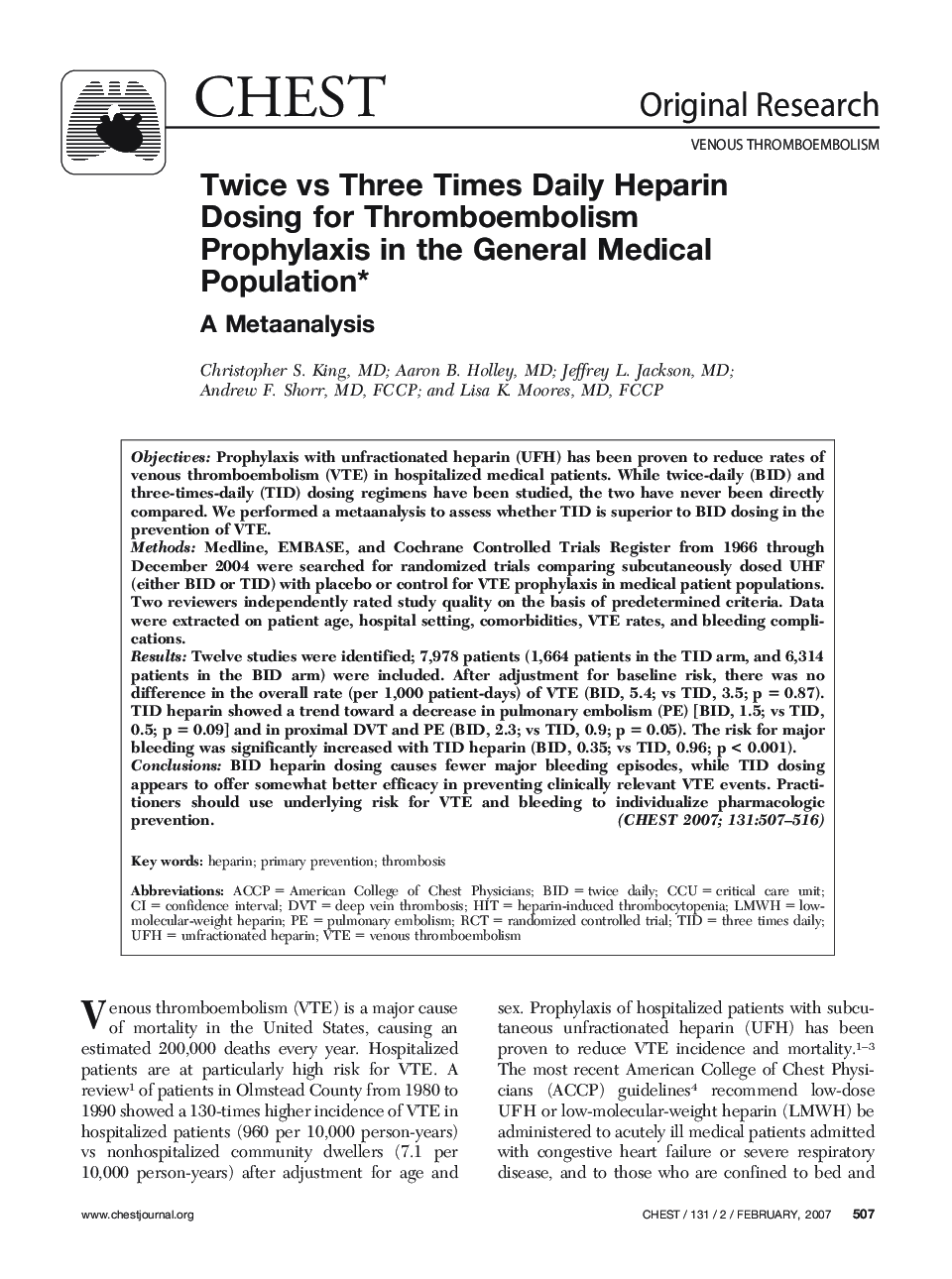| Article ID | Journal | Published Year | Pages | File Type |
|---|---|---|---|---|
| 2906584 | Chest | 2007 | 10 Pages |
Objectives:Prophylaxis with unfractionated heparin (UFH) has been proven to reduce rates of venous thromboembolism (VTE) in hospitalized medical patients. While twice-daily (BID) and three-times-daily (TID) dosing regimens have been studied, the two have never been directly compared. We performed a metaanalysis to assess whether TID is superior to BID dosing in the prevention of VTE.Methods:Medline, EMBASE, and Cochrane Controlled Trials Register from 1966 through December 2004 were searched for randomized trials comparing subcutaneously dosed UHF (either BID or TID) with placebo or control for VTE prophylaxis in medical patient populations. Two reviewers independently rated study quality on the basis of predetermined criteria. Data were extracted on patient age, hospital setting, comorbidities, VTE rates, and bleeding complications.Results:Twelve studies were identified; 7,978 patients (1,664 patients in the TID arm, and 6,314 patients in the BID arm) were included. After adjustment for baseline risk, there was no difference in the overall rate (per 1,000 patient-days) of VTE (BID, 5.4; vs TID, 3.5; p = 0.87). TID heparin showed a trend toward a decrease in pulmonary embolism (PE) [BID, 1.5; vs TID, 0.5; p = 0.09] and in proximal DVT and PE (BID, 2.3; vs TID, 0.9; p = 0.05). The risk for major bleeding was significantly increased with TID heparin (BID, 0.35; vs TID, 0.96; p < 0.001).Conclusions:BID heparin dosing causes fewer major bleeding episodes, while TID dosing appears to offer somewhat better efficacy in preventing clinically relevant VTE events. Practitioners should use underlying risk for VTE and bleeding to individualize pharmacologic prevention.
